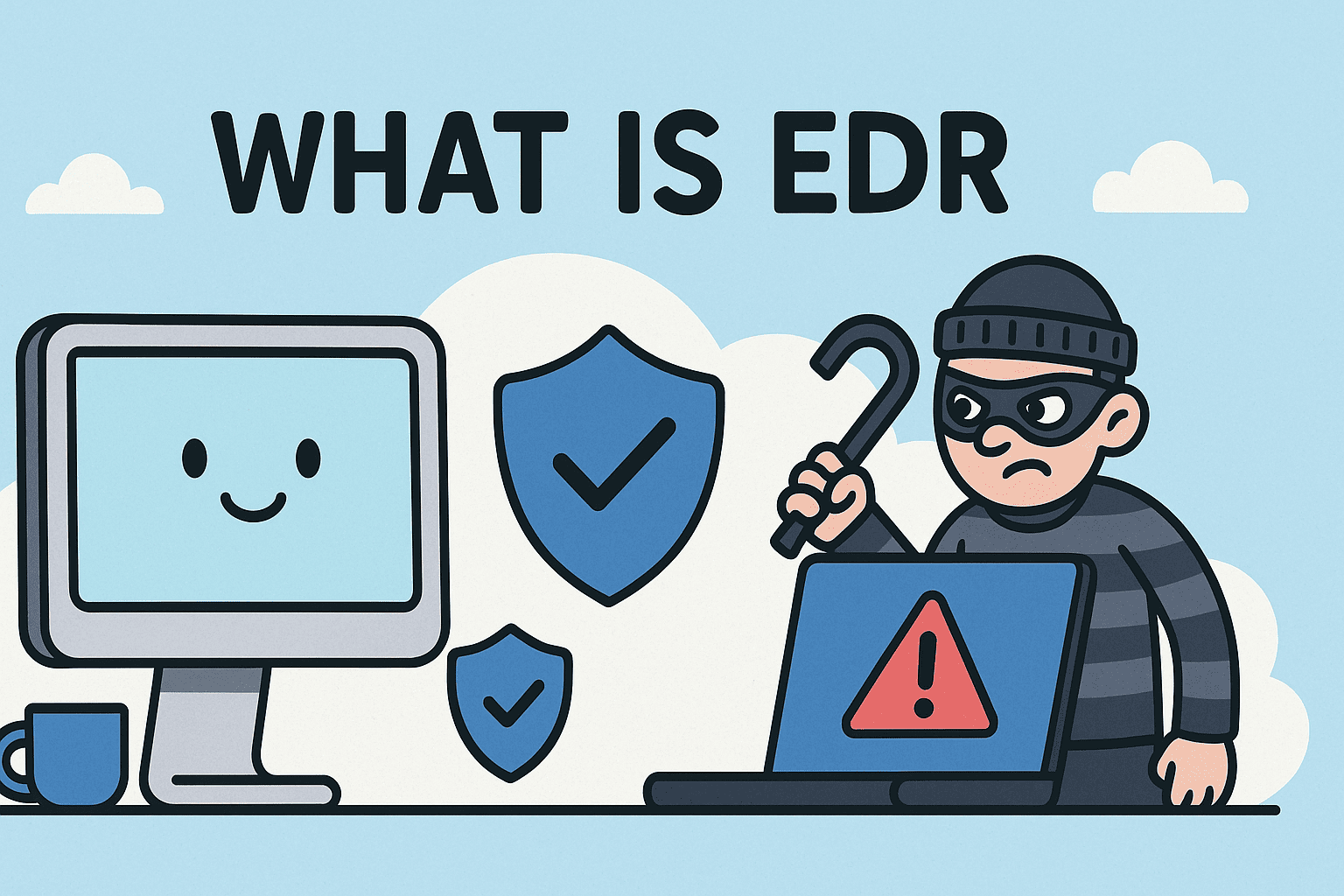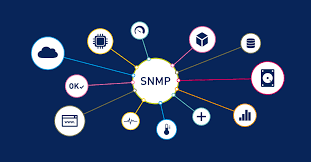The Limitations of Antivirus in a Modern Threat Landscape
Updated on July 10, 2025, by ITarian

Cyberattacks are evolving rapidly—and so should your defenses. According to IBM, the average time to identify a breach is over 200 days. That’s a long window of vulnerability.
So, what is EDR?
EDR stands for Endpoint Detection and Response. It’s an advanced cybersecurity solution that monitors endpoint devices (laptops, mobile phones, servers) to detect, investigate, and respond to threats in real-time.
In this article, you’ll discover:
- What makes EDR different from antivirus
- How it strengthens your overall endpoint security
- Why threat detection and response is critical for modern organizations
Let’s dive in.
What is EDR?
Endpoint Detection and Response (EDR) is a cybersecurity approach designed to detect and respond to suspicious activity on endpoint devices. Unlike traditional antivirus software that relies on known signatures, EDR tools use behavior-based detection and continuous monitoring to identify advanced threats.
Core Features of EDR:
- Real-time endpoint monitoring
- Suspicious behavior detection
- Threat investigation capabilities
- Automated or guided incident response
- Centralized visibility across endpoints
Simply put, EDR is the modern evolution of endpoint security. It gives organizations the tools to stay ahead of emerging threats—before they cause damage.
EDR vs Antivirus: What’s the Difference?
Let’s clear up the confusion.
| Feature | Antivirus | EDR |
| Signature-based detection | ✅ | ✅ |
| Real-time behavior analysis | ❌ | ✅ |
| Incident response tools | ❌ | ✅ |
| Threat hunting capabilities | ❌ | ✅ |
| Post-attack forensics | ❌ | ✅ |
| Centralized dashboard | ❌ | ✅ |
Antivirus focuses on prevention using predefined malware signatures.
EDR goes further—it detects unknown threats, offers response options, and provides forensic insights after an attack.
Why Endpoint Security Needs EDR
Modern businesses rely on an ever-growing fleet of endpoint devices—from remote work laptops to smartphones and cloud-connected servers. These endpoints are often the easiest targets for attackers.
Here’s where EDR steps in to enhance endpoint security:
Benefits of EDR in Endpoint Security:
- Visibility: Get a comprehensive view of all endpoint activities.
- Speed: Detect and respond to incidents instantly.
- Control: Quarantine infected systems remotely.
- Insight: Analyze root causes to prevent future attacks.
- Compliance: Meet data protection standards like GDPR, HIPAA, and SOC 2.
With EDR, organizations gain real-time situational awareness and the ability to act fast—key components of effective cybersecurity.
The Power of Threat Detection and Response
Traditional cybersecurity tools react to threats after the fact. EDR is proactive—it detects threats as they emerge and offers multiple response options.
How EDR Enables Threat Detection and Response:
- Collects telemetry data from endpoints (files, registry changes, processes).
- Analyzes behaviors for patterns matching known or unknown threats.
- Generates alerts and visual maps of the attack path.
- Automates response (e.g., isolate, terminate process, roll back changes).
- Facilitates threat hunting using historical data and threat intelligence.
This real-time detection and fast response cycle is crucial for minimizing the impact of attacks.
Top Use Cases for EDR
Here’s how organizations leverage EDR every day:
1. Ransomware Containment
EDR detects unauthorized encryption behavior and isolates the device before the ransomware spreads.
2. Insider Threat Monitoring
It flags suspicious internal activity, like large file transfers or off-hours access.
3. Remote Incident Response
Security teams can quarantine and investigate devices even if they’re not on the corporate network.
4. Advanced Persistent Threat (APT) Detection
EDR identifies long-term intrusions through unusual lateral movements and persistence methods.
What to Look for in an EDR Solution
Not all EDR tools are created equal. Here are must-have features to prioritize:
- ✅ Real-time behavioral analytics
- ✅ Automated incident response
- ✅ Threat intelligence integration
- ✅ Cloud-native architecture for scalability
- ✅ Customizable alerting and workflows
- ✅ User-friendly dashboard for security teams
Bonus if the EDR integrates seamlessly with your SIEM, firewalls, and MDR services.
How to Implement EDR in Your Organization
Adopting an EDR solution is not just about technology—it’s also about people and process.
Step-by-Step EDR Implementation:
- Assess your environment: Identify endpoints and potential risks.
- Choose the right tool: Match features with business needs.
- Deploy agents: Install lightweight agents on all critical endpoints.
- Configure policies: Define detection rules and response actions.
- Train your team: Ensure your SOC knows how to use the platform.
- Monitor and improve: Use alerts, analytics, and reports to refine strategy.
Successful EDR implementation strengthens your organization’s security backbone.
FAQ: What People Ask About EDR
1. What is the purpose of EDR?
EDR helps detect, investigate, and respond to threats targeting endpoint devices. Its purpose is to provide continuous protection and actionable insights to security teams.
2. Is EDR better than antivirus?
Yes. While antivirus can block known threats, EDR detects advanced threats, offers real-time visibility, and automates responses, making it a superior option for modern businesses.
3. Do small businesses need EDR?
Absolutely. Small and medium businesses are frequent targets of cyberattacks. EDR offers scalable and cost-effective protection for businesses of any size.
4. Can EDR prevent ransomware?
Yes, EDR can detect ransomware behavior early, isolate the system, and stop the spread—preventing major data loss or financial damage.
5. What’s the difference between EDR and MDR?
EDR is a tool. MDR (Managed Detection and Response) is a service that uses EDR tools combined with human expertise for 24/7 monitoring and incident response.
Final Thoughts: Is Your Business Truly Protected?
In today’s complex digital environment, basic antivirus software is no longer enough. EDR gives you the tools to detect hidden threats, respond fast, and protect your most valuable assets.
Whether you’re an IT manager, cybersecurity leader, or CEO—investing in EDR isn’t just smart. It’s necessary.
Ready to Level Up Your Endpoint Security?
Start protecting your business from advanced threats today.
👉 Sign up now for a free trial of EDR and take control of your endpoint defense.













